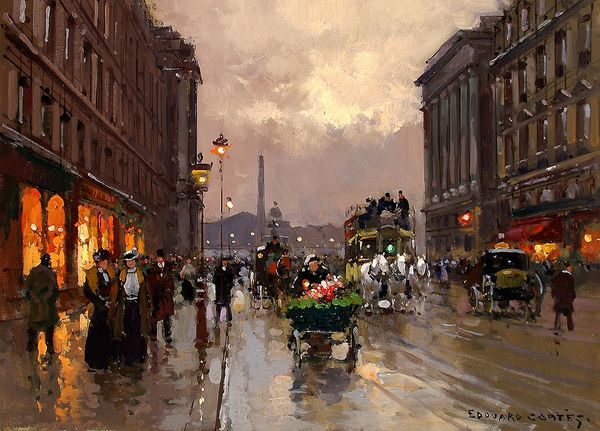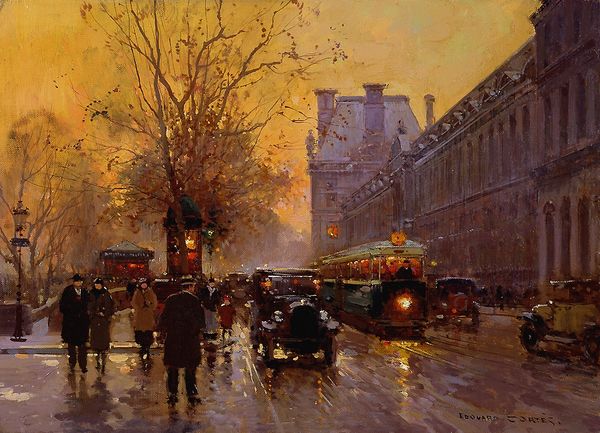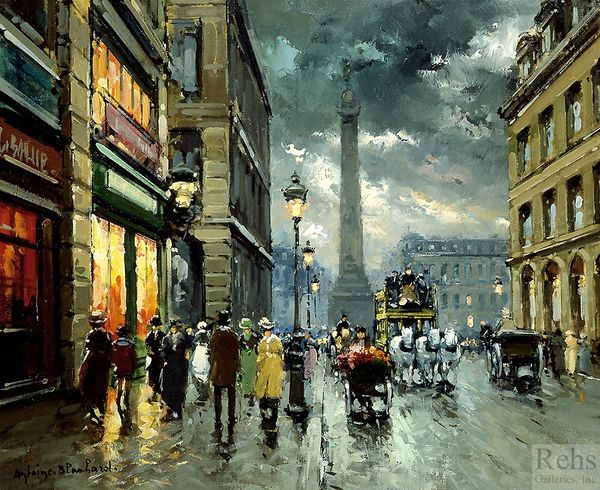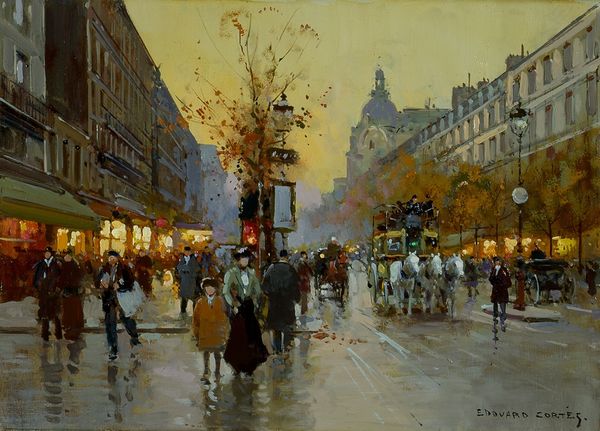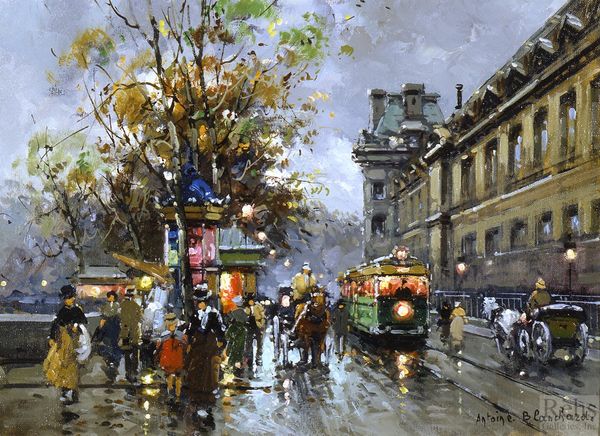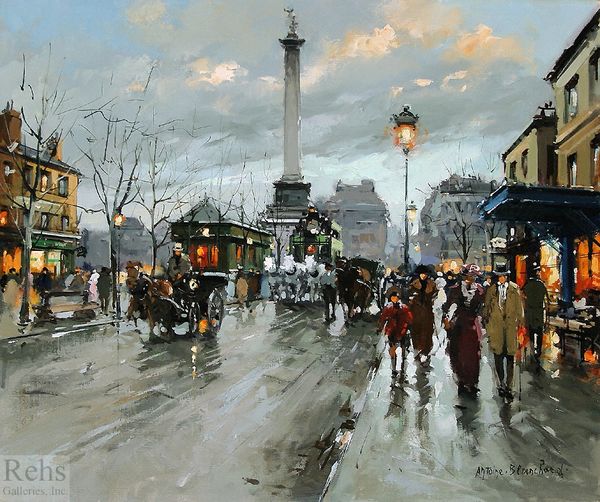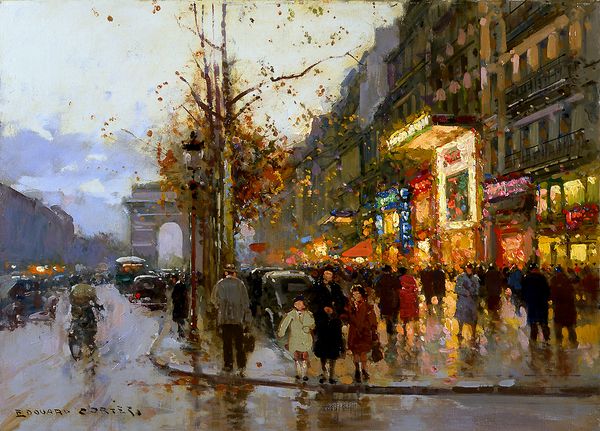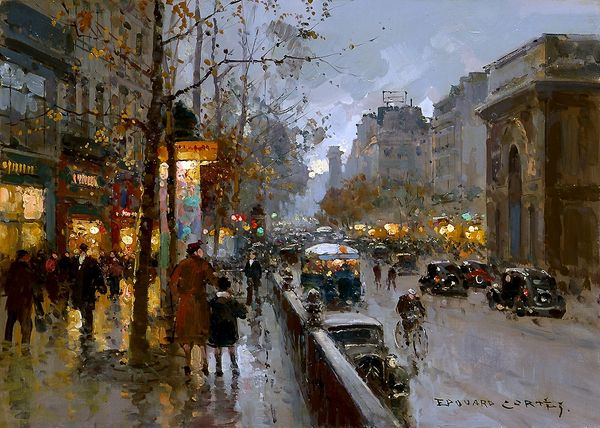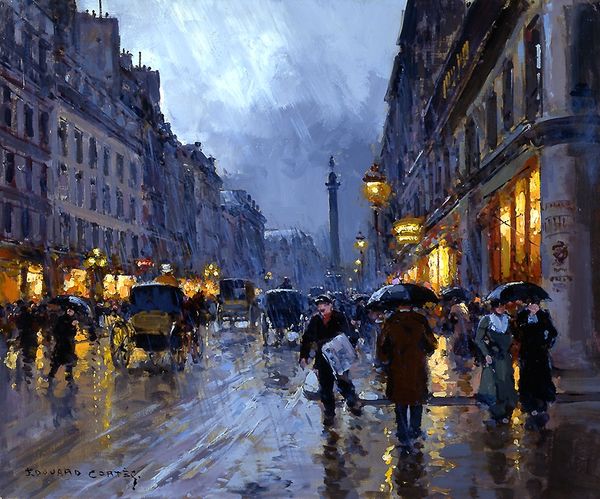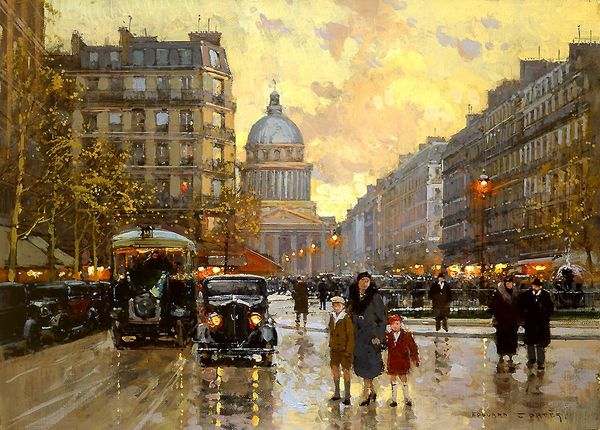
painting, plein-air, oil-paint
#
urban landscape
#
urban
#
cityscape
#
painting
#
impressionism
#
plein-air
#
oil-paint
#
urban cityscape
#
figuration
#
city scape
#
urban life
#
square
#
cityscape
#
street
#
modernism
#
building
Copyright: Edouard Cortes,Fair Use
Curator: Edouard Cortes invites us into the bustling heart of Paris with his captivating painting titled, "Place de la Concorde." The city comes alive with vibrant, impressionistic strokes. Editor: My first impression is a dance of light on wet cobblestones. The composition guides my eye from the warm glow of shop windows to the hazy silhouette of monuments in the distance, an orchestrated cityscape, softened by atmospheric perspective. Curator: Indeed, observe the use of oil paint to mimic the transient nature of light reflecting on surfaces. It really draws you in. I think it hints to the industrial expansion occurring throughout the city and country at the time this painting was being created. Editor: Agreed, and note the vertical thrust of the obelisk contrasting with the horizontal expanse of the square, setting up a satisfying visual tension. The formal balance contributes to its undeniable visual appeal. The artist even adds in subtle variations in the colors he presents across the cityscape. Curator: Right, the workers, shop owners, patrons and their access to the Place tells its own story of work and leisure, eh? Editor: Precisely. It's interesting how Cortes uses brushstrokes that barely define form. Yet it successfully conjures a sense of movement, an active tableau vivant in Paris, no? I cannot tell who each person is or the materials and textures each person possesses in their dress, yet somehow I see everything the painting holds. Curator: I agree, Cortes highlights the accessibility of goods that are now becoming available in urban cities such as Paris, London, and New York City. The shop windows bring life into what would be an otherwise dreary image. The shop and department store employment in the 19th century helped to support an uptick of single working women. The cobblestones become part of the process of urban transformation. Editor: It's remarkable how a seemingly straightforward representation can trigger such varied interpretations. The painting, despite its muted tones, hums with the energy of urban life and modern industrial advancements that occurred across major western societies at the time. Curator: Absolutely. From its materials to its potential reflection on the social strata of Parisian society, Cortes offers us a glimpse of process. Editor: And from a purely aesthetic vantage, the harmony of form and light makes it simply, a captivating visual experience.
Comments
No comments
Be the first to comment and join the conversation on the ultimate creative platform.
